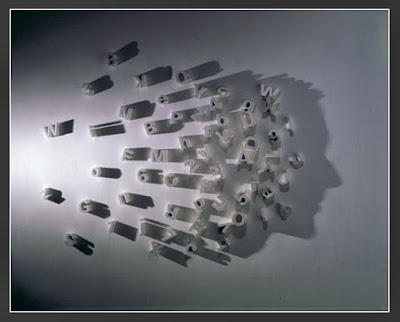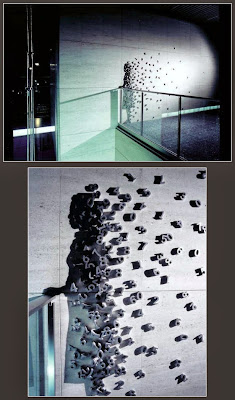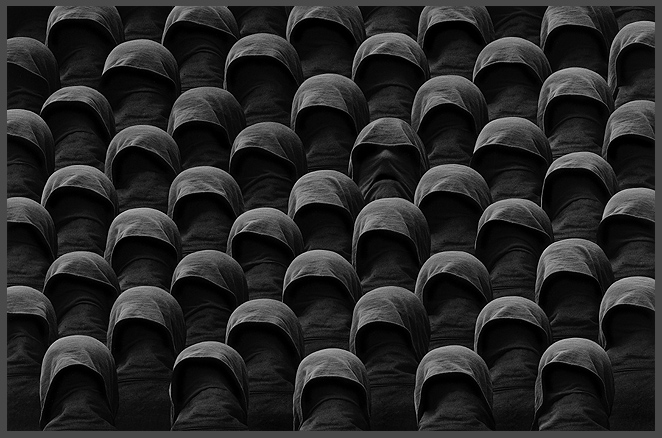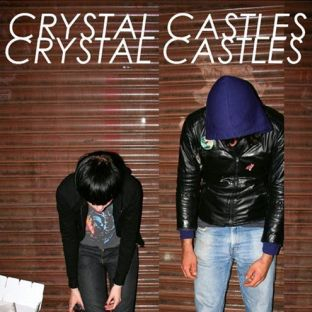Wednesday, October 31, 2007
Random Links - Blogs
http://grijs.blogspot.com/ - GRIJS - from Belgium
grey gris grå grau
This blog is about design mainly from europe and things that inspire.
Hunting and gathering beauty....
http://territoiredessens.blogspot.com/ - Le Territoire Des Sens (I think the translation is The Territory of Perception or Senses) - from France.
Le territoire des sens is a blog about the small things which stimulate my (the author is Andrée-Anne Dupuis-Bourret) creativity and my senses. Here my collection of inspirations: images, books, musics, videos and links. Welcome!
http://www.elmanco.com/ - El Manco - from Italy
El Manco searches for beauty, innovation, and good design
Najwajean - The less obvious music for rainy days

The island where I live has been sunk in water for the past few days because of a tropical storm, and it has created a mood of romantic uncertainty that I think Najwajean's music could help explain.
The spanish group is the birthchild of Najwa Nimri in voices, and Carlos Jean in sampling, who banded together in 1998 and have created what has become my favorite music in the album No Blood. Her sultry voice, that happens to be both upbeat and melancholic at the same time, is the perfect front for the strong rhythms of the music.
They haven't done anything together since their last original soundtrack for the movie Guerreros. Najwa Nimri has released, I think, two albums after this, and Carlos has been busy doing some commercial work, but the word is that they are working on new material for next year. I am anxiously awaiting the release.
Sunday, October 28, 2007
Claudio Vilarinho - Premio Mobilidade 2007
The Portuguese Architect Cláudio Alberto Vilarinho da Silva has won the 2007 (the first was last year) installment of the Premio Mobilidade (Mobility Prize), a prize established by the Portuguese Association of Architects and the Santa Casa da Misericordia de Lisboa, with the purpose of distinguishing the best study, project or plan of architecture, under the theme the mobility.
Hopefully I won't mess this up, since I'm translating from his website in Portuguese, I hope that Gecko is reading this an will tell me if I'm making some major mistakes.
Claudio Vilarinho's specific winning entry was focused towards the increasing independence and life expectancy that the elderly are enjoying. Through accessibility he increased the quality of life of the persons that were to live in his building. He also reinforced social ties through the exploration of the interaction spaces of the building, like conversation benches, fusing small thematic gardens with the common circulation areas, and verandas that give access to the apartments, much like front porches work in traditional houses.
Claudio Vilarinho was listed among the 10 best Portuguese architects under 40.
Thursday, October 25, 2007
Céu

São Paulo (Brazil) born singer songwriter Céu (Maria do Céu Whitaker Poças) is the epitome of malemolência, a beautiful and sexy 25 year old singer with a sophisticated, multi-layered sound. CéU is about innocence, beauty, putting a little rhythm and happiness into life, taking it easy, sunshine and, above all, malemolência. With her first album launching late summer in the UK, CéU presents a modern, innovative and internationally appealing take on samba, at the meeting point between global urban sounds and the Afro-Brazilian tradition. When CéU formed her band she was looking for young, fresh musicians from different musical backgrounds. She ended up selecting a group of musicians whose average age was just twenty-five. However their age is no reflection on the enormous combined talent of the group, whose charisma, energy and musical maturity is a perfect fit with CéUs exposition of Malemolência.
Their influences range from Fela Kuti to Miles Davis, from The Roots to Massive Attack, from M'shell Ndogeocello to Portishead, as well as Brazilian composers such as Tom Jobim, Baden-Powell, Egberto Gismonti among others.
From what I'vre heard of her work, she epitomizes what I love about music, the fusion of rhythms. For some reason I feel more in touch with my feelings as a citizen of the world. It takes us one step closer to being in harmony with one another. If we were like music, so that almost all cultures could coexist in one harmonious place...well... I'll stop the cheesiness here, and just enjoy Ceu's music. But also be sure to check out Chambao, and maybe a little bit of Ojos de Brujo. I'm sure that if you enjoy musical fusion, you'll enjoy these artists. By the way... Ceu means Sky in Portuguese.
Sources: Aurgasm, Last FM
Stimuli 0701
"This image is a representation of what would otherwise be a story, as told by ancestors who recreate myths of events that allegedly occurred at some moment in time."
Wednesday, October 24, 2007
Misha Gordin
If you get the chance, be sure to spend some time browsing through Czech photographer Misha Gordin's web portfolio. I am sure my fascination with his photography has to do with the fact that I am an architect, the seriality and repetition of his artwork appeals to the structural rhythm I've been trained to like. And his incorporation of architecture into his photographs along with the surreality of his topics definitely appeal to my long time obsession with Salvador Dali and his dreamscapes.
"For the last 30 years I have been involved in conceptual photography, where the idea or vision is transformed by the camera to an image connected to reality only by my imagination.""The initial process is similar to writing poetry. I believe that my work is a visual statement of my life and my dreams. From there it becomes more technical. I prefer not to describe the technical aspects of the process. I believe it diminishes the power of an image."
Crowd #44 - 1998
Misha Gordin
"A big rock lays on the southern border of the land I live.
I like to visit him on a Sunny winter day and walk around in a circle, absorbing his silent energy.
I like to stand on top of him with my eyes shot toward the bright sun.
I like to fill my chest with a crisp air and reach towards the sky.
I feel secluded, but not alone. It's where I belong.
The lonely owl is watching me from his nest across the ravine."
Very similar to Dali, Gordin also relies on his dreams to create art. Drawing and redrawing his composition according to the memory of his subconscious. He simply uses the camera to translate with the bits and pieces that he needs the onyrical instant from his perceptual memory, instead of paint on a canvas. He points the camera inwards, toward his soul, instead of outwards to the world, creating a real non-existent world of his own.
This is one of the concepts, perceptual memory, that my idea of architecture, surrealism, and Gordin's photography share, the phenomenological aspect of space, time, and perception embedded in memory.
Tuesday, October 23, 2007
New World Blood
The website New Italian Blood has been conducting a survey among its readers and calling it New World Blood, even though it's not even considering any countries outside the European Continent. People reading the pages nominate who they consider to be the best emerging architects under 40, building a list of the top 10 with links to their websites and naming about 25 runner ups. As of now four countries have been listed, Spain, Portugal, France and Denmark. With Germany coming soon and Britain, Netherlands, Slovenia, Austria and Switzerland to follow.
It reminds me of the list of the 101 of the most exciting new architects that Wallpaper magazine published about two months ago. The basic difference, aside from the way the lists are presented, is that Wallpaper does include the rest of the world. Although there are no Caribbean countries included.
Be sure to visit both of them, It's definitely interesting. I haven't visited all of the architect's websites on these lists, but I know a few of them, and they are worth a look.
Kumi Yamashita
 Profile, 1994
Profile, 1994 wood, light, cast shadow
Description: The number and the alphabet blocks,
lit from the left, cast a silhouette of a man's profile.
Image from: http://kumiyamashita.com/
Kumi Yamashita was born in Japan and got her BFA in the Cornish College of the Arts in Washington State. She later went on tho do an MFA in the Glasgow School of Art in the UK.
 City View ,2003 Light, Aluminum, Shadow Permanent display at the 2nd floor of Nanba Parks Tower, Osaka, Japan. Commissioned by Nankai Railways Inc. Description: The numbers scattered on the wall, lit from the right, cast a silhouette of a woman. "I like looking at the light in the afternoon and watching shadows move.
City View ,2003 Light, Aluminum, Shadow Permanent display at the 2nd floor of Nanba Parks Tower, Osaka, Japan. Commissioned by Nankai Railways Inc. Description: The numbers scattered on the wall, lit from the right, cast a silhouette of a woman. "I like looking at the light in the afternoon and watching shadows move.It reminds me that everything is always changing. I like things that do not have
concrete form, like clouds, water, shadows, and the kindness of people.
Image from: http://kumiyamashita.com/
"I have been experimenting with light and shadows along with
various other media to examine what separates solid and ephemeral, visible and
invisible, inner and outer.
One of the issues I focus on is the boundary
we create within ourselves by categorizing the world. Through my work I wish to
remind ourselves of how we preconceive what is around and inside us. Knowledge,
ideas, and values are too often accepted without questioning. Can we find a way
to evaporate ourselves from a pond and condensate over an ocean? Can we see a
common thread that connects all things?"
 Clouds,2005
Clouds,2005Light, Aluminum, Shadow
Permanent display at the 3rd floor of Stellar Place Sapporo JR Tower
Commissioned by Japan Railways Inc.
Description: The thin metal object on the wall,
lit from above, casts the silhouette of a couple.
Image from: http://kumiyamashita.com/
Kumi Yamashita traces figures with the most obscure materials. Her subjects include shadows on the wall or dirty prints from a pair of old boots. Her graphic skills are amazingly well honed and the delightful images she produces are even more pleasing because we doubt our eyes when we see how they are produced. In one installation lifelike forms of the human body in motion are produced by the most unlikely source. On the wall, illuminated by a single strong lamp, we can see an arrangement of ordinary children's building blocks. Some are shaped like block letters or toy animals, but they are random forms in different sizes and shapes. Yamashita has arranged these so that each throws a particular shadow which, when taken with all the other precisely placed objects, astonishingly adds up to the illusion of reality.
 "Landscape", detail, 33" x 34" x 26", 2001 Light, cast shadow, fiberglass, steel, wood, motor. (Kinetic, shadow mouth appears to move as if talking.)
"Landscape", detail, 33" x 34" x 26", 2001 Light, cast shadow, fiberglass, steel, wood, motor. (Kinetic, shadow mouth appears to move as if talking.)Image from: http://www.rair.org/MarshellGalleryl-Kumi.htm
In her piece called "Landscape" she has used the most mundane medium, a dish, to portray a shadow of a talking person. The dish rotates as a steel bar stays in place, and with the shadow it casts into the "landscape" and the shadow appears to speak. I still don't know if sound forms part of the experience, but somehow I believe it is not, it would deter from the surreal feeling and awe from the ability to create such illusive alternative.
Sunday, October 21, 2007
German Team Won the Solar Decathlon

The Solar Decathlon is a competition in which 20 teams of college and university students compete to design, build, and operate the most attractive, effective, and energy-efficient solar-powered house. The Solar Decathlon is also an event to which the public is invited to observe the powerful combination of solar energy, energy efficiency, and the best in home design.
The event takes place on the National Mall in Washington, D.C.
"This year the Technische Universität Darmstadt achieved the first place. This team from Germany came to the Solar Decathlon hoping to have an impact on people, and it's safe to say that this happened. Darmstadt won the Architecture, Lighting, and Engineering contests. The Architecture Jury said the house pushed the envelope on all levels and is the type of house they came to the Decathlon hoping to see. The Lighting Jury loved the way this house glows at night. The Engineering Jury gave this team an innovation score that was as high as you could go, and said nobody did the integration of the PV system any better. Darmstadt was one of seven teams to score a perfect 100 points in the Energy Balance contest. All week, long lines of people waited to get into this house."
Saturday, October 20, 2007
Gaudi in the Favela

Last Saturday I was flipping through channels on my TV and stopped on BBC World when I heard a voice with British accent talk about Gaudi's architecture and how desirable his houses and apartments were. I was fascinated by what they really showed me, it was "Favela Fantasy Gives Rise to Gaudi House". It was a piece on a house in a Sao Paulo Favela called by the neighbors "Casa de Pedra" or the House of Stone. Estevao Silva da Conceicao, the owner, has definitely mirrored Gaudi's work without even knowing the architect's name.

He started his house around a rose bush that he planted, in order to have a place to live and to protect the plant he built around it using organic shapes and found construction materials like pebbles, dishes and saucers; later on he used materials like clocks and typewriters, storing the materials before starting another part of the house. Today, two decades later after he started, a time frame comparable to the time that Gaudi took to build a project, we get a labyrinthine set of hallways, stairs and spaces that have been compared to Parc Guell (dioxmat's Flickr Photoset here) in Barcelona.

The house is still a work in progress, growing as his family grows and changes its needs.
MIMOA - We needed something like this
 MIMOA, or Mi Modern Architecture, is a traveling Architect's dream come true. It's a website that posts locations and photos of the modern architecture in Europe. It launched last month, and as of now it is only a European thing, but hopefully will spread to the rest of the world.
MIMOA, or Mi Modern Architecture, is a traveling Architect's dream come true. It's a website that posts locations and photos of the modern architecture in Europe. It launched last month, and as of now it is only a European thing, but hopefully will spread to the rest of the world.In their own words:
"It is the best source of information for your city trip in Europe with all Modern Architecture in one view. MIMOA shows Europe’s Modern Architecture on a map with the address and all additional information you need to actually find and visit interiors, parks, public places, buildings and bridges."
Projects like this Purist building in Essen, Germany, by the Japanese architects Sanaa, that they designed for the Zollverein Design School (the map above is the location for this building). It's a part of the revitalization of the Zollverein Coal Mine Industrial Complex World Heritage Site, inscribed in 2001 as proof of the "evolution and decline of an essential industry over the past 150 years."
Friday, October 19, 2007
Architects should Innovate or Perish
by David Celento for Harvard Design Magazine
I've been debating myself lately on the topic of architecture and success. How could a young Architect achieve success in an already saturated construction market. Marti Neumeier already addressed some of the facts that make good design a success in his slideshow "The Brand Gap - How to bridge the distance between business strategy and design" posted on SlideShare. Be sure to check it out.
"Architects are among the very few providing
custom design services in a product-infatuated society. This presents a profound problem, especially since few clients possess an understanding of the efforts necessary to create custom products, and even fewer are willing to adequately finance them."
"To avoid obsolescence, architects need to increase demand for their skills by embracing emerging technologies that both stimulate and satiate consumer desires."
“I have to admit that the guy who drives a BMW or an Audi (whose parents drove an Oldsmobile) is not doing that only because he knows the Audi looks better — he is also doing it because of the status that ascribes to that name, and now, that status is available to (and sought by) a far broader segment of the population than it once was.” Why don’t people lust after fine buildings to the extent that they do BMWs and Audis? The answer is simple — they can’t. Architecture is sold in units of
one."
People are consistently learning more about good design, and also getting it from a mass production market, apple has made it clear that good design sells. Their portable audio products, and now their Iphone that has invaded an already saturated market with a product that offered something new. This has achieved the impossible-to-ignore task of stealing clients from other carriers and faithful cellphone users. Proving once again that innovation and good design are critical for the success of any design for any consumer.
The saturation of manufactured goods today has had a profound impact not only on consumers, but also on providers of custom-made goods. Consider the once flourishing tailoring trade, which, as a consequence of mass production, has shrunk to one sixteenth its size from 1920 to 1990. Today, industrialized societies have gleefully traded fit, finish, and durability in exchange for savings, variation, brand-name identity, transient fashions, and immediate gratification.
Today’s consumers fundamentally lack an understanding of the complexity of creating anything tailor-made, let alone a substantive (and emotionally complex) object like a new building. Architectural clients soon find themselves lost amid a bewildering world of possibilities and complications that they are unprepared for because of their customary reliance on mass-produced goods. Rather than being exhilarated by the process, they are often left with remorse, since they must eliminate countless desirable options along the way. While a few may enjoy the ambiguity, attention, cost, and complexity of the architectural process, many conditioned by the modern conveniences of ready-made products, web ordering, and overnight delivery are simply frustrated by it.
If fifty years later Houses of the Future were envisioned as daringly, they would surely be the offspring of a union between digital design and automated rapid fabrication. Not limited to simplistic adobe-esque load-bearing styles, these homes would come in a variety of forms ranging from traditional to avant-garde and would be available in many durable colors, textures, materials, and translucencies. Complete with injury-free, pliable children’s rooms, these structures (likely constructed with five-axis extrusion heads and sonic welding already used for utility piping) will be capable of complex shapes that would make even Gaudí envious. A significant side effect will be that ornament will again proliferate, since complexity will no longer have a direct relationship to labor cost.




